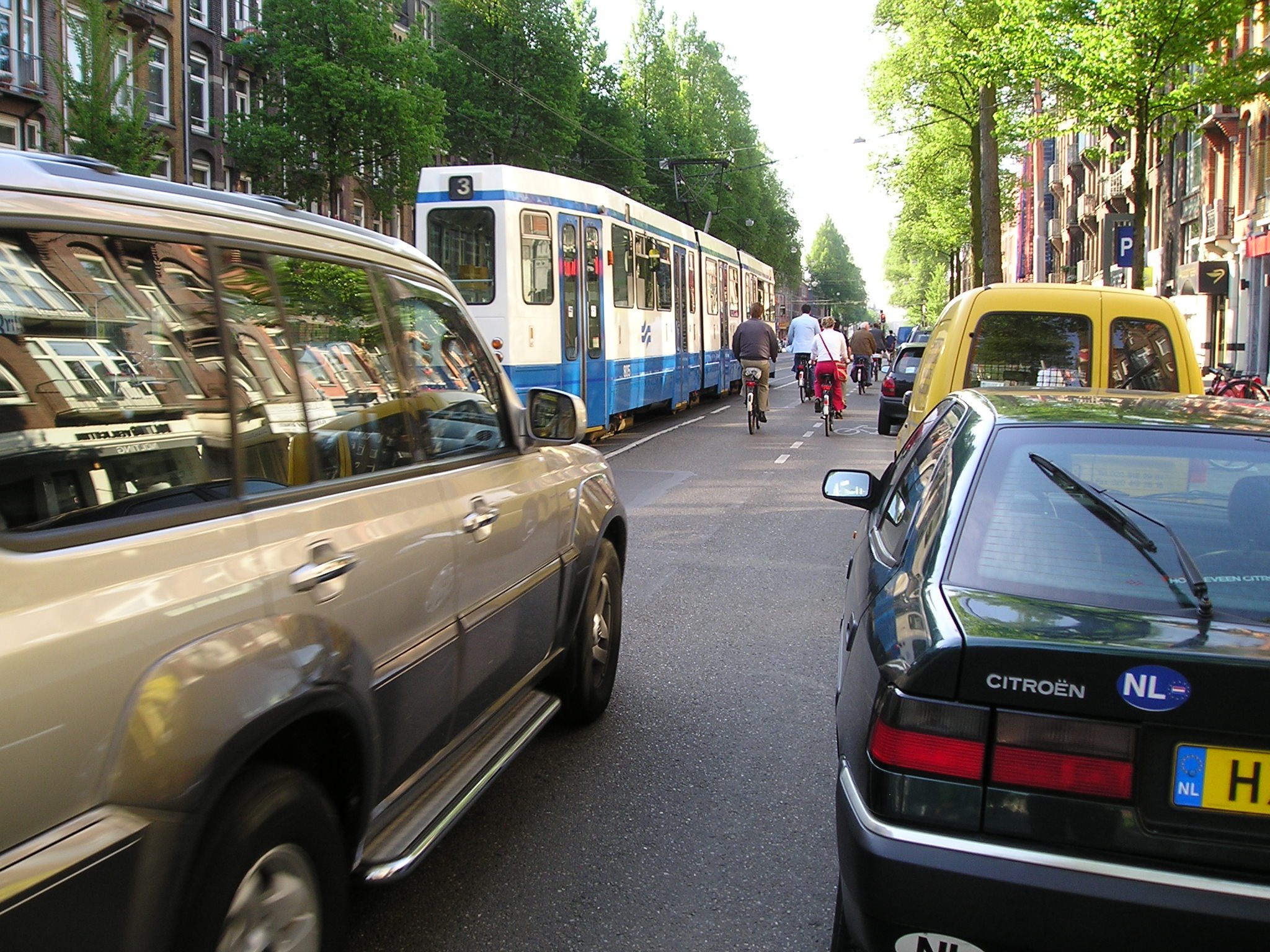Bilderdijkstraat: Road safety vs trees
Bilderdijkstraat is a 30-metre-wide main street in the western part of the city. There are shops, cafés and homes together with a high volume of pedestrians, cyclists, trams and cars. Before 2005 cyclists rode on bike lanes between driving and parked cars. This was both dangerous and unnerving. Find out about the dilemmas we encountered to improve this situation.
The busy bicycle route in Bilderdijkstraat, part of the main bicycle network, was problematic in terms of cycle safety. Cyclists were at risk of the large number of cars driving and parking adjacent to the bike lanes. The situation did not meet the standards for sustainable safety. Around 2003 the street was due for renovation. A planning process was started to create a new street lay-out.
Trees or cycle safety?
Segregated bicycle paths would improve cycle safety in Bilderdijkstraat. But the optimal location for those bike paths was just in the line of old trees along the street. The old trees were well loved and could not simply be shifted aside. This led to dilemmas and questions. What is more important, trees or cycle safety? Could the cyclists not keep cycling with the cars? Could the trees not be replaced by new ones in a better location? Could the street not be converted into a one-way street for cars in order to make space for bike paths?
After extensive research and consultation with many parties, it was decided that the old trees would stay. Cycle paths (1.8 metre wide) would be built between the trees and the sidewalks. The sidewalks were narrowed from 5 metres to approximately 3.5 metres.
Since the renovation in 2005, cycle safety in Bilderdijkstraat has improved and cycling has become more relaxed and doable for all.
The Bilderdijkstraat in images

Future route ferry Zeeburgereiland. Photo: Transport Authority Amsterdam

Parked cars are risky for cyclists, and for pedestrians to cross. Photo: Stadsarchief Amsterdam, 1986

Cycling in between riding and parking cars, 2003. Photo: Marjolein de Lange

Bilderdijkstraat with cycle paths, 2011. Foto: Marjolein de Lange

Cross section of present lay-out at nrs 132-155. Image: City of Amsterdam

Sidewalk and bike path on Bilderdijkstraat, 2011. Foto: Marjolein de Lange

Raised entrance construction to side street means priority and safety for cyclists and pedestrians along Bilderdijkstraat
Raised entrances of side streets
The intersections of main roads with smaller streets are usually equipped with an entrance construction. The cycle path and the sidewalk along the main road continue over the raised entrance construction. This means that all traffic from and to the side street needs to give way to cyclists and pedestrians along the main road. The elevation ensures that traffic speed is reduced. The concept of entrance constructions is part of the Dutch road safety program Systematic Safety.
Lessons learnt
Redesigning main streets requires to make compromises. Here at Bilderdijkstraat, the sidewalks were narrowed to keep the trees and build the bicycle paths.
Cycle paths like these have contributed in making cycling doable for all, young and old. They helped in getting more people to cycle. So much so that now the 1.8-metre-wide cycle paths are getting overcrowded during rush hours.
With the project Seond Bicycle Ring, Amsterdam is looking into new solutions for Bilderdijkstraat, and subsequent streets.
Our question
What dilemmas and challenges are you encountering when creating safe bicycle paths in your city? Share your thoughts and ideas via Disqus below!







